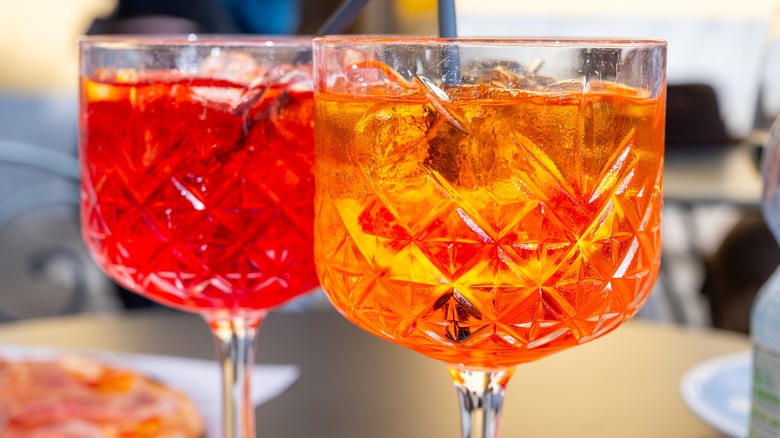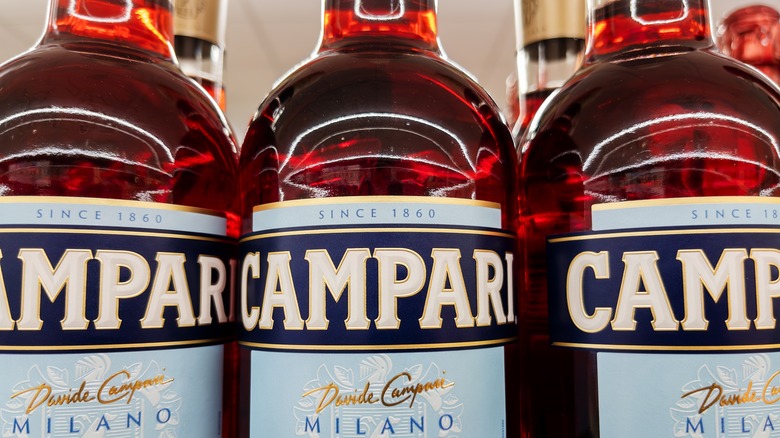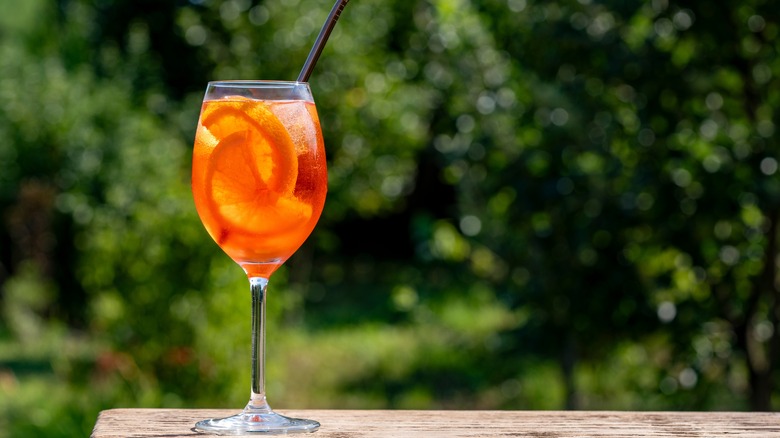What Makes Campari Different From Aperol?
When it comes to Italian liqueurs, you'd be hard-pressed to find any two more iconic than Campari and Aperol. Both are key ingredients in some of the most essential Italian cocktails, including the Negroni and the spritz. And while experienced cocktail enthusiasts may be familiar with their distinctions, it's easy to be confused by their similarly bright colors, bitter flavor profiles, and functionality in drinks. So what is it, exactly, that sets these two liqueurs apart?
Let's start with their similarities. Both Campari and Aperol are considered apéritifs, meaning that are traditionally meant to be enjoyed prior to a meal to activate one's appetite. They are also both technically members of the amaro family of bitter, herbaceous Italian liqueurs, although amaros are more typically associated with after-dinner digestifs. Both are also known to have acerbic, citrusy, and floral notes, though the intensity and complexity of these flavor profiles differ.
Though either liqueur makes for a wonderful addition to a bright, summery cocktail to sip near the sea, Campari and Aperol are generally associated with different drinks. They are further differentiated by their origins, appearances, alcohol content, and, most importantly, their similar but still distinct flavors.
Campari is bolder (and older)
If you need a cheat code to tell these liqueurs apart, you can think of Campari as the more "advanced" of the two, not only in age, but in intensity and alcohol content. Campari was invented in 1860 by Gaspare Campari and first sold at his cafe in Milan. The company boasts that its founder's original recipe has gone untouched ever since, though the actual contents of that recipe are a secret. While no one but the Campari Group, which exclusively produces the liqueur, knows its ingredients, its flavors evoke orange peel, wood, and a complex blend of herbs. The liquid's bright, cherry red color is another major part of its brand identity.
Campari's alcohol content is between 20.5 and 28.5% alcohol by volume (ABV), depending on where it's sold, which is double that of Aperol. Because of its relatively high ABV and intense flavor, it's often used in boozier cocktails, such as the iconic Negroni, which requires a bold gin to counter the strong Campari flavor. Its complex bitterness and notes of citrus make it a delicious alcoholic addition to iced coffee as well.
Aperol is more approachable for new drinkers
If you're new to the world of apéritifs and Italian amaros, Aperol is widely considered to be the more beginner-friendly liqueur. Though it's still characteristically bitter, the bright orange drink has a significantly sweeter taste to it than Campari. Aperol features flavor notes of orange zest and vanilla alongside more floral ones. At around 11% ABV, it has a comparatively lower alcohol content as well. Those factors make Aperol a popular choice for lighter, fruiter drinks like a classic Aperol spritz (which you might be making all wrong, despite the drink's simplicity).
Aperol was invented by brothers Silvio and Luigi Barbieri in the Italian city of Padua in 1919, almost 60 years after Campari. Much like Campari, its exact recipe isn't known, but it has been confirmed that the liqueur contains gentian root, a botanical often used to infuse spirits; rhubarb, a tart, stalky vegetable; and cinchona bark, which is also used to flavor tonic water. Interestingly, Aperol has been manufactured by the Campari Group since 2003, furthering the connection between the two brands of liqueur.


